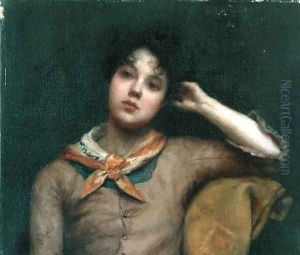Harriet E. Ryder Paintings
Harriet E. Ryder was an American artist born in 1854, whose work, though not widely known in the mainstream art world, offers a glimpse into the artistic expression of the late 19th and early 20th centuries. Ryder's life and career were framed by the societal and cultural shifts of her time, including the aftermath of the Civil War, the rise of the women's suffrage movement, and the onset of the Industrial Revolution, all of which influenced the themes and techniques present in her work.
Ryder was primarily known for her watercolor paintings and pencil sketches, which often featured landscapes, portraits, and still life compositions. Her style combined elements of realism and impressionism, a reflection of the evolving art scene of her era. Despite the limited recognition Ryder received during her lifetime, her work now serves as an important example of female artistic production in an era when women artists were often marginalized and overlooked.
Throughout her career, Ryder faced the challenges of being a woman in a predominantly male art world. She was largely self-taught, which was common for women artists at the time, as they were frequently excluded from formal art institutions. However, Ryder was known to have been involved with local art communities, participating in exhibitions and engaging with other artists, which helped to somewhat mitigate the barriers she faced.
Ryder's art did not gain significant attention until after her death in 1908, when a renewed interest in forgotten and underrepresented artists began to emerge. Today, her works are studied for their contribution to understanding the role of women in the arts during the late 19th century, and for the unique perspective they offer on the societal changes of her time. Ryder's legacy is that of an artist who, despite the constraints of her era, pursued her passion for art and contributed to the tapestry of American art history.
